Get the weekly SPARTANAT newsletter.
Your bonus: the free E-Book from SPARTANAT.
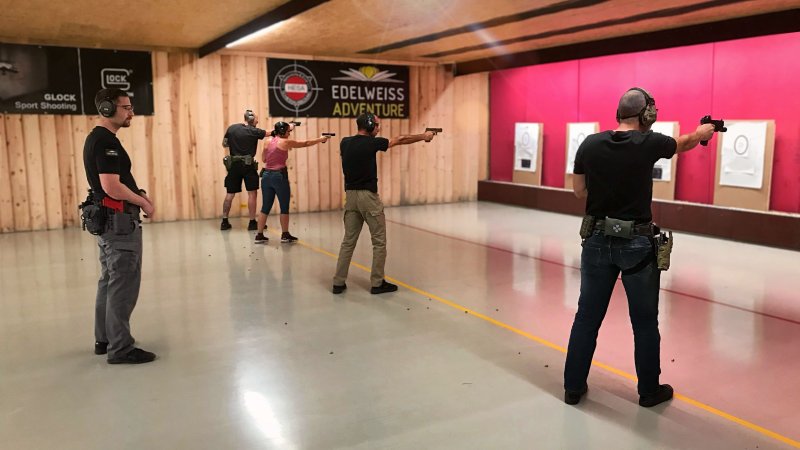
Module 3 of defensive shooting at Edelweiss Adventure followed Module 1 and Module 2. Three weeks had passed again and the program of the third module included the following: shooting in a one-handed stance with the strong and weak hand, one-handed weapon handling, shooting while using cover, and course shooting (low-level).
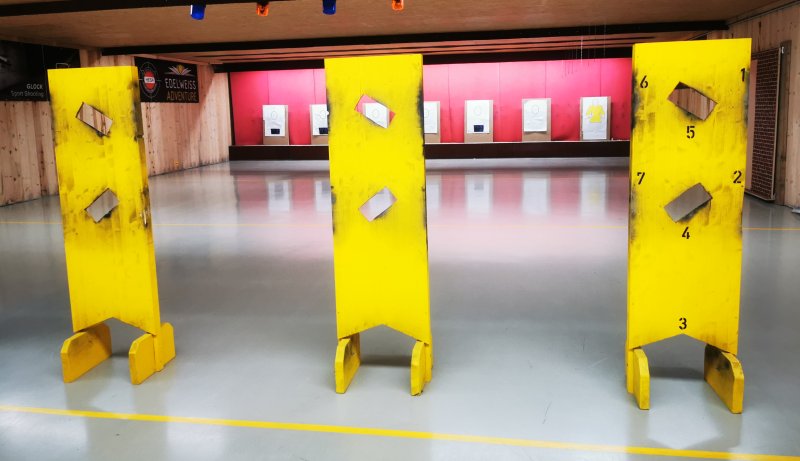
The expectations for the course and its content were slightly higher this time, as shooting with the weak hand had not been thoroughly practiced and mastered by us. Before attending the course, we practiced both dry training sequences and live fire drills, but especially the handling and resulting shot patterns with the weak hand still needed some improvement. We were really curious to see how the course would impact this.
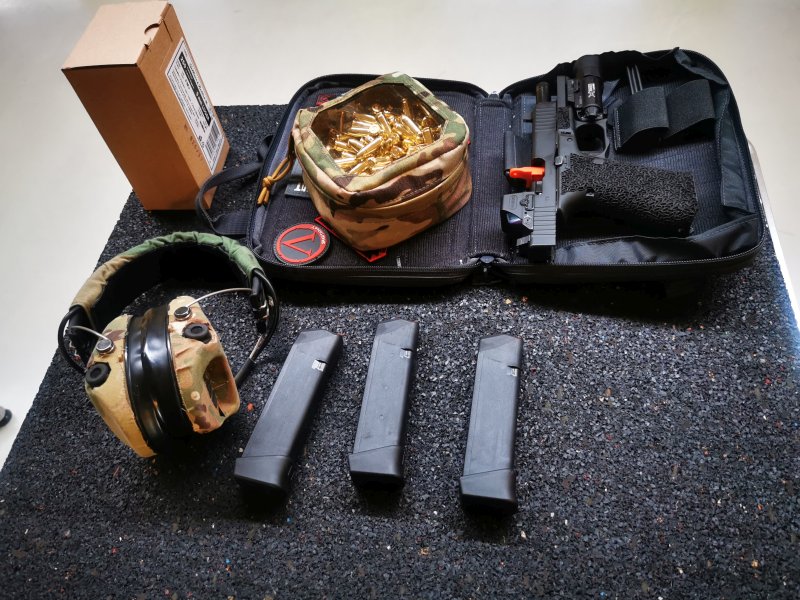
Upon entering the hall and greeting the other participants, it was noticeable how everyone had grown with the experience gained from the previous courses. The equipment increasingly met individual requirements, and everyone's weapon handling seemed very familiar.
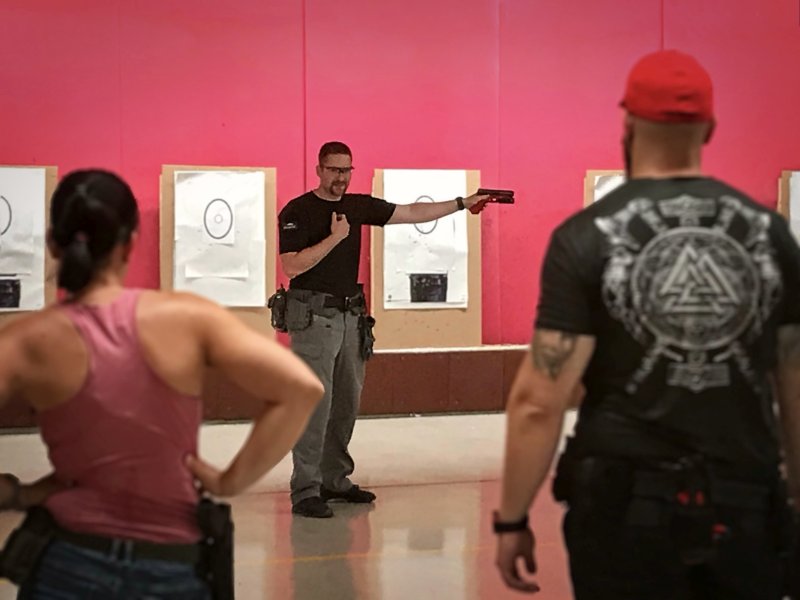
This time, the course was not led by Heinz, but by Anatolij, one of the other shooting trainers of the Edelweiss Adventure team. However, one could be sure that the accumulated expertise and experience of Heinz over the years also reflected in the training contents of the other trainers, and the course was conducted at the usual high level.
After a brief welcome, the first drill started. Loading, holstering, and the content from Module 1 and Module 2 were tested in the following exercises. At the beginning of each course, the trainers needed to assess the skill level of the participants to determine if new content could be built upon it. This was also important for the participants to recall all steps of safe handling and focus on even the smallest details that may have been forgotten during the time between modules. After the review, the familiar scoring shooting followed once again.
Another constant of the Edelweiss modules and always a nerve-wracking adventure for us. The time pressure generated by the timer and the interested looks of the other participants raised the pulse of some skillfully. This was the perfect exercise for everyone to practice continuing to handle their own firearm safely even in stressful situations.
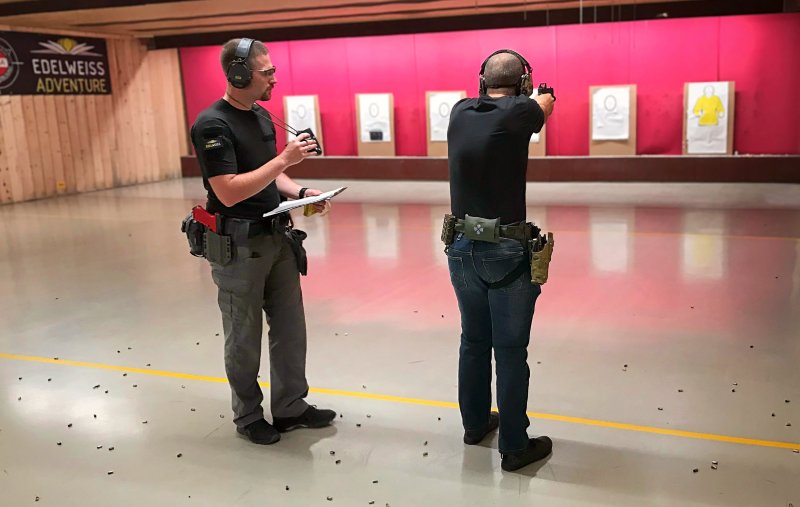
What followed was the new course content from Module 3. We started with shooting one-handed, first with the strong hand. Throughout the courses, new techniques were repeatedly discussed and explained, why they were necessary, or why a situation could arise in which, for example, shooting with only one hand should be mastered. Anatolij demonstrated the best way to hold the weapon and what to focus on during the respective exercises. The first shots with our right, strong hand went quite smoothly.
But then we switched to the left side, our weak hand. Here, the shot group was definitely larger than before, and the rate of fire was slower despite concentration. But not only one-handed shooting was practiced, but also the variant of shooting with both hands, where the weak hand was the one operating the trigger. Since this grip was completely new for most people, the weapon handling initially felt quite unfamiliar, but with each subsequent shot we took, it became a little easier. Here too, the goal was to train the handling until it was stored as an automated process again.
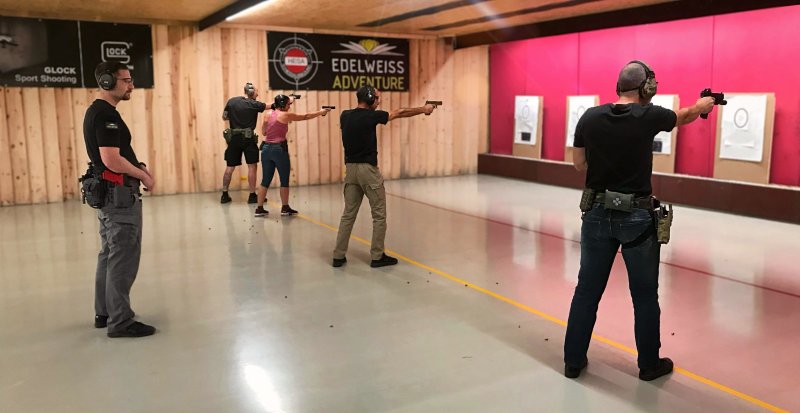
Anyone who wants to shoot one-handed or must do so depending on the situation should also be able to manipulate the weapon with only one hand. This was the second major training block of the course. Anatolij explained to us that there are many different variations and possibilities of handling, some of which were briefly touched upon and demonstrated. However, to pack all this in detail into one course would exceed the scope, so the focus was on the most commonly used, stress-resistant, and practical method.

So it was about firing the weapon one-handed and then correctly and safely performing the subsequent manipulation. Standing, the gun was shot and then, for the subsequent magazine change, knelt down on the ground to clamp the pistol with the slide open and without the (previously discarded) magazine into the crook of the knee. The next full magazine could thus be easily attached one-handed to the weapon and made ready for firing again by racking the slide against one's own shoe sole. It was important to always point the muzzle towards the ground and to keep the gun's slide parallel to the sole of the shoe during the racking process, ensuring the usual required safety at all times.
Our weapon had a red dot sight mounted, which made the whole process a little more difficult. Due to the large surface area of the sight, the slide could not slide over the edge of the shoe as desired to release the slide catch lever. Anatolij, however, was immediately on hand to help and explained that the slide could also be actuated with the edge of the shoe at the ejection port. For us, this was the saving solution and from then on we continued to train with this method. The other participants also tried both variations and each was ultimately able to use the technique that felt best and worked most smoothly.
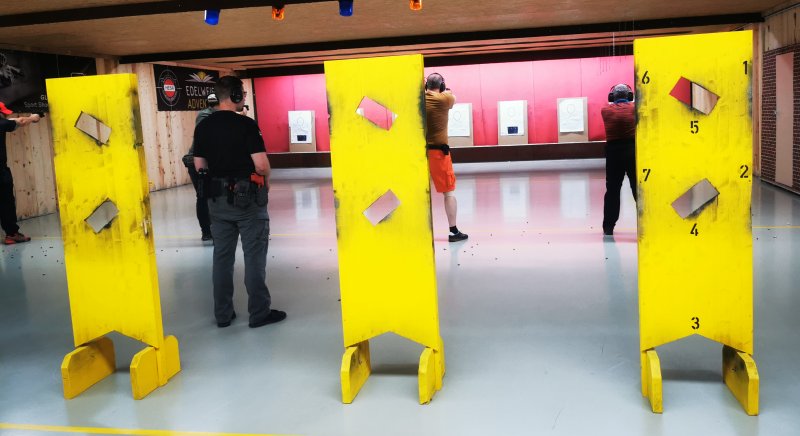
What was still missing was drawing the weapon from the holster with the non-dominant hand. Here again, we noticed how important the correct equipment for the respective intended use was. Up to now, we used a Safariland holster, model 6354 DO, which had an active safety mechanism that was unlocked with the thumb. At least under normal circumstances.
However, when attempting to draw the gun with the support hand, this proved to be correspondingly more difficult, as the mechanism had to be unlocked and the pistol had to be drawn at the same time. The process was indeed more challenging than anticipated, but we were able to perform it with concentration in the sterile shooting range situation. However, we also realized that the same process might be impossible in a stressful situation. This prompted us to switch to a Kydex holster for future courses, which allowed drawing the weapon with both hands, whether weak- or strong-side, much easier.
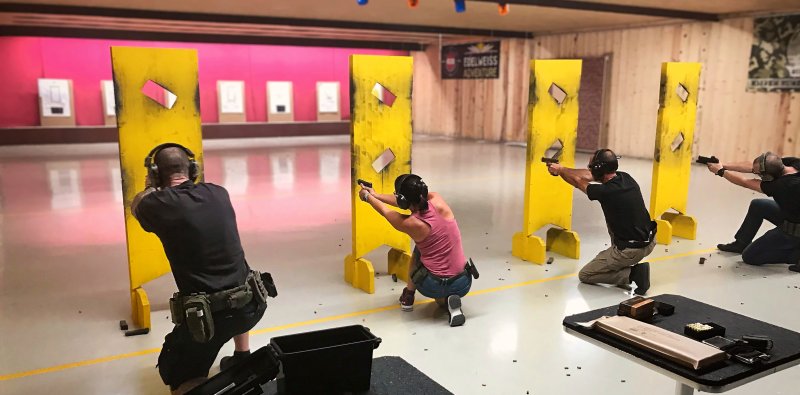
The hours flew by and our heads began to fill up with many new course contents again. Even though the previous procedures demanded a lot of concentration from us, another important topic was addressed. This involved shooting including proper cover behavior. Wooden covers were set up, with openings arranged at various angles. Anatolij now demonstrated the exercises and explained in detail what to consider when using cover.
The goal was to hit as precisely as possible and to present as little of the body as necessary. For us as right-handed shooters, working around the cover on the right side was not too much of a challenge, but shooting in a two-handed grip with the weak-side hand and passing on the opposite side of the cover was actually more difficult than originally thought. Previously learned content from the course and past modules were now required, and we noticed here and there a few small training deficits. After several repetitions at the cover, our shooting pattern improved and we were able to execute the processes fluidly.
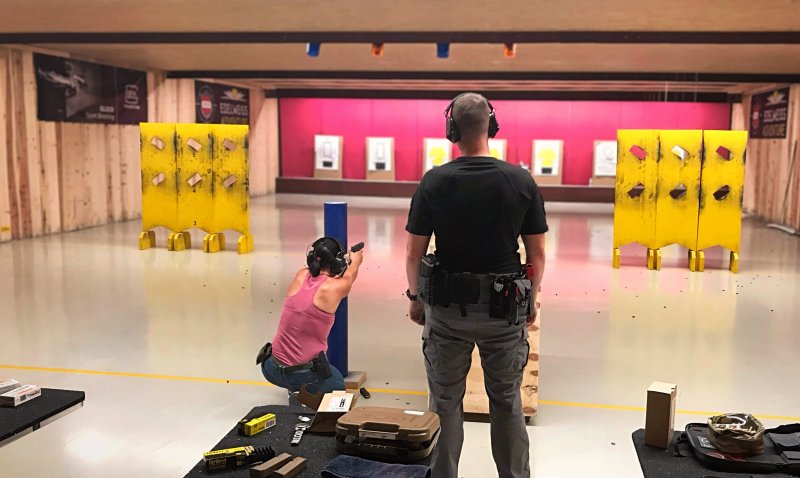
At the end of the course, there was another course, which in our opinion was a symbol of Edelweiss Adventure. Right at the beginning of the exercise, there was a small nerve-racking surprise, which we do not want to reveal here, in case readers still get to experience the module themselves.
We found that the classic training contents were always mixed with unique specialties and challenges throughout the courses, providing a lot of variety in the modules themselves. In the subsequent course, shooting from different distances was followed by the application of correct cover behavior. In total, three different targets were engaged, demanding all previously learned skills from us in combination, which definitely represented the crowning conclusion for us.
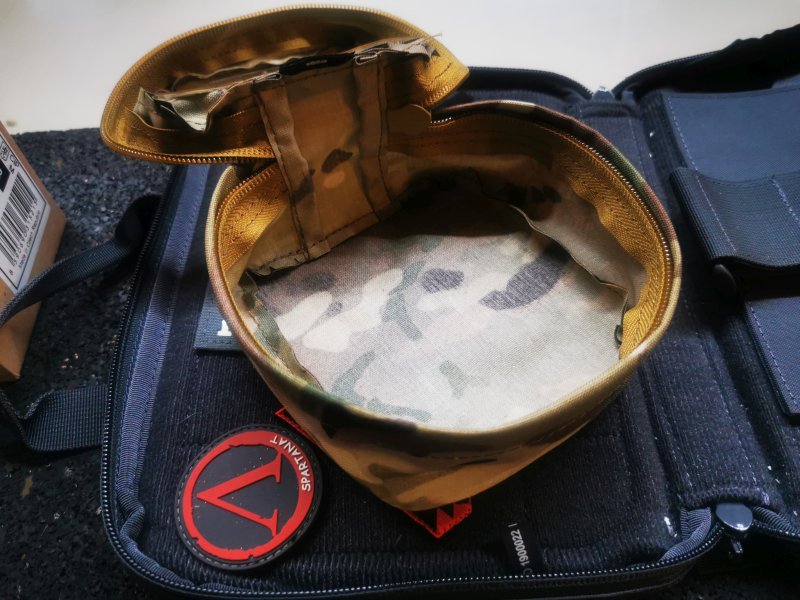
After 4 hours and around 300 shots, the course was unfortunately over far too quickly once again, but during the module our expectations were as always met. Not only did our shooting pattern improve due to the newly learned techniques and exercises, but our range of handling techniques also expanded significantly.
We also became aware of possible deficiencies in our equipment and what we should train in order to reach the necessary level of competencies for the next module. As Edelweiss considers the reinforcement of content and training of these aspects, in addition to conducting the modules, as an important concern, the training center regularly offers guided group trainings in which the procedures can be repeated and thus better internalized. In our opinion, these are definitely recommended. For us, it was certainly not the last module we will attend, but until it is time again, we will continue to practice diligently.
All courses as well as shooting trainings, events and more from Edelweiss Adventure, can be found HERE.
EDELWEISS ADVENTURE on the Internet: www.edelweiss.world
SPARTANAT is the online magazine for Military News, Tactical Life, Gear & Reviews.
Send us your news: [email protected]
Ad
similar
Get the weekly SPARTANAT newsletter.
Your bonus: the free E-Book from SPARTANAT.


